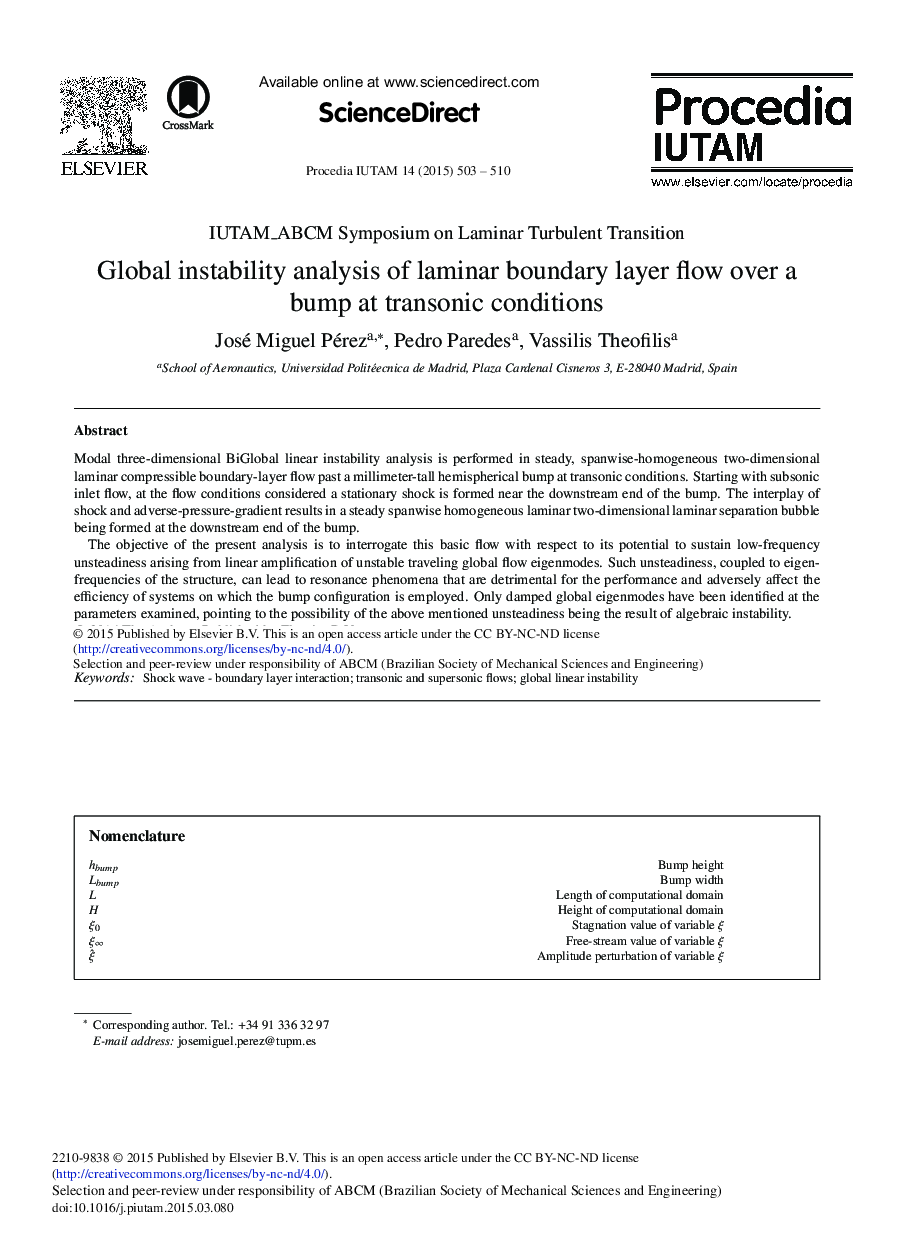| Article ID | Journal | Published Year | Pages | File Type |
|---|---|---|---|---|
| 864816 | Procedia IUTAM | 2015 | 8 Pages |
Modal three-dimensional BiGlobal linear instability analysis is performed in steady, spanwise-homogeneous two-dimensional laminar compressible boundary-layer flow past a millimeter-tall hemispherical bump at transonic conditions. Starting with subsonic inlet flow, at the flow conditions considered a stationary shock is formed near the downstream end of the bump. The interplay of shock and adverse-pressure-gradient results in a steady spanwise homogeneous laminar two-dimensional laminar separation bubble being formed at the downstream end of the bump.The objective of the present analysis is to interrogate this basic flow with respect to its potential to sustain low-frequency unsteadiness arising from linear amplification of unstable traveling global flow eigenmodes. Such unsteadiness, coupled to eigen- frequencies of the structure, can lead to resonance phenomena that are detrimental for the performance and adversely affect the efficiency of systems on which the bump configuration is employed. Only damped global eigenmodes have been identified at the parameters examined, pointing to the possibility of the above mentioned unsteadiness being the result of algebraic instability.
